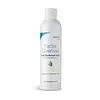What's inside
What's inside
 Key Ingredients
Key Ingredients

 Benefits
Benefits

 Concerns
Concerns

No concerns
 Ingredients Side-by-side
Ingredients Side-by-side

Water
Skin ConditioningSodium Lauryl Glucose Carboxylate
CleansingLauryl Glucoside
CleansingDecyl Glucoside
CleansingDisodium Cocoyl Glutamate
CleansingGlycerin
HumectantBentonite
AbsorbentLactobacillus Ferment
Skin ConditioningLactobacillus
Skin ConditioningCocos Nucifera Fruit Extract
EmollientXanthan Gum
EmulsifyingSodium Hyaluronate
HumectantGuar Hydroxypropyltrimonium Chloride
Skin ConditioningCitric Acid
BufferingPanthenol
Skin ConditioningTocopheryl Acetate
AntioxidantWater, Sodium Lauryl Glucose Carboxylate, Lauryl Glucoside, Decyl Glucoside, Disodium Cocoyl Glutamate, Glycerin, Bentonite, Lactobacillus Ferment, Lactobacillus, Cocos Nucifera Fruit Extract, Xanthan Gum, Sodium Hyaluronate, Guar Hydroxypropyltrimonium Chloride, Citric Acid, Panthenol, Tocopheryl Acetate
Water
Skin ConditioningGlycerin
HumectantCocamidopropyl Betaine
CleansingSodium Lauroyl Methyl Isethionate
CleansingCoco-Glucoside
CleansingSodium Methyl Oleoyl Taurate
CleansingPropanediol
SolventNiacinamide
SmoothingCeramide NP
Skin ConditioningCucumis Sativus Fruit Extract
EmollientLauryl Glucoside
CleansingPolyglyceryl-10 Stearate
Skin ConditioningSucrose Stearate
EmollientTetrasodium Glutamate Diacetate
Hydrogenated Lecithin
EmulsifyingCitric Acid
BufferingSodium Hydroxide
BufferingSodium Benzoate
MaskingPotassium Sorbate
PreservativeWater, Glycerin, Cocamidopropyl Betaine, Sodium Lauroyl Methyl Isethionate, Coco-Glucoside, Sodium Methyl Oleoyl Taurate, Propanediol, Niacinamide, Ceramide NP, Cucumis Sativus Fruit Extract, Lauryl Glucoside, Polyglyceryl-10 Stearate, Sucrose Stearate, Tetrasodium Glutamate Diacetate, Hydrogenated Lecithin, Citric Acid, Sodium Hydroxide, Sodium Benzoate, Potassium Sorbate
Ingredients Explained
These ingredients are found in both products.
Ingredients higher up in an ingredient list are typically present in a larger amount.
Citric Acid is an alpha hydroxy acid (AHA) naturally found in citrus fruits like oranges, lemons, and limes.
Like other AHAs, citric acid can exfoliate skin by breaking down the bonds that hold dead skin cells together. This helps reveal smoother and brighter skin underneath.
However, this exfoliating effect only happens at high concentrations (20%) which can be hard to find in cosmetic products.
Due to this, citric acid is usually included in small amounts as a pH adjuster. This helps keep products slightly more acidic and compatible with skin's natural pH.
In skincare formulas, citric acid can:
While it can provide some skin benefits, research shows lactic acid and glycolic acid are generally more effective and less irritating exfoliants.
Most citric acid used in skincare today is made by fermenting sugars (usually from molasses). This synthetic version is identical to the natural citrus form but easier to stabilize and use in formulations.
Read more about some other popular AHA's here:
Learn more about Citric AcidGlycerin is already naturally found in your skin. It helps moisturize and protect your skin.
A study from 2016 found glycerin to be more effective as a humectant than AHAs and hyaluronic acid.
As a humectant, it helps the skin stay hydrated by pulling moisture to your skin. The low molecular weight of glycerin allows it to pull moisture into the deeper layers of your skin.
Hydrated skin improves your skin barrier; Your skin barrier helps protect against irritants and bacteria.
Glycerin has also been found to have antimicrobial and antiviral properties. Due to these properties, glycerin is often used in wound and burn treatments.
In cosmetics, glycerin is usually derived from plants such as soybean or palm. However, it can also be sourced from animals, such as tallow or animal fat.
This ingredient is organic, colorless, odorless, and non-toxic.
Glycerin is the name for this ingredient in American English. British English uses Glycerol/Glycerine.
Learn more about GlycerinLauryl Glucoside sugar- and lipid-based cleansing agent. It is created from glucose and lauryl alcohol.
This ingredient is a surfactant, making it easier to rinse oil, dirt, and other pollutants away.
A British study found lauryl glucoside to cause skin sensitivity for some people. We recommend speaking with a professional if you have concerns.
Other names for this ingredient include "Lauryl Polyglucose", "Lauryl glycoside", and "D-Glucopyranoside".
Learn more about Lauryl GlucosideWater. It's the most common cosmetic ingredient of all. You'll usually see it at the top of ingredient lists, meaning that it makes up the largest part of the product.
So why is it so popular? Water most often acts as a solvent - this means that it helps dissolve other ingredients into the formulation.
You'll also recognize water as that liquid we all need to stay alive. If you see this, drink a glass of water. Stay hydrated!
Learn more about Water